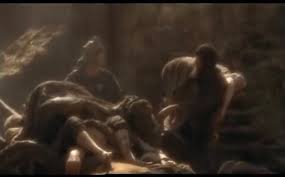So, you have a dead deer in an area with Chronic Wasting Disease (CWD). Now what? These are the ins and outs of responsible carcass management in CWD areas.
“Bring out your dead!” Not to make light of a serious subject, but even Monty Python knew that carcass management is important in controlling the spread of diseases. CWD and other diseases are a concern in Wyoming’s deer and elk populations. Responsible carcass management is the first step in preventing the introduction of diseases to new areas.

If you have a deer or elk headed for the freezer or the taxidermist, what is your first step? The safest assumption is that your animal is positive for CWD unless and until a test tells you otherwise. Your best choice is to leave the head, spine, entrails, and legs at the site of the kill. This ensures that the most infectious parts don’t travel to a new area. If you need to transport your carcass whole, it is legal to transport to your home, a processor, or a taxidermist (but no whole carcasses across state lines). Once you move the animal from the spot it was killed, it is your responsibility to make sure your animal and its parts are disposed of appropriately. More on that later.
When handling your animal, you may want to use gloves. For legal purposes, be sure to retain evidence of sex, species, or horn or antler development as required in the regulations. If you are concerned about consuming CWD positive meat and are having your animal tested, make sure to carefully label your meat. CWD or not, you should also keep a clean workspace if you are butchering yourself and use bleach or another disinfectant to clean up after you are done.
For any CWD positive meat that you will not consume and any other body parts you will not be using, place them in a sturdy garbage bag and transport them to an approved landfill. You can also ask that your taxidermist and/or meat processor do the same.
Here is a list of approved landfills in Wyoming.
That was a lot about what not to move from your carcass, but what can you move?
You can safely transport:
- Cut and wrapped meat
- Boned meat
- Animal quarters or other pieces with no portion of the spinal column or head attached
- Cleaned hides without the heads
- Cleaned (no meat or other tissue attached) skull plates with antlers attached
- Antlers with no meat or brain tissue attached
At this point, there is no evidence the prion that causes the disease in deer and elk can ever be transferred to humans and caused disease. Given the scarcity of data, however, and out of an abundance of caution, the Center for Disease Control and Wyoming Game and Fish Department recommends against eating the meat of CWD positive animals. As a result, if you take a CWD positive animal, the wanton-waste laws will not apply, though each individual is allowed to make the decision to consume or not consume the meat.
Good luck hunting and please remember to take care of your carcasses responsibly this fall.
